During These Strange Times, Our Email Programs Have Shown Resilience
It goes without saying that the coronavirus outbreak caused an upheaval in how nonprofits are approaching their fundraising programs. Given the new norm of social distancing, many organizations will need to rely more on digital marketing to compensate for losses they may be seeing in other channels.
That said, it is critically important not to come off as tone-deaf to the pandemic in these digital efforts. This is why the biggest question we have continued to address with our clients as they have been revamping their digital marketing campaigns is: “should I do this?”
In email marketing, our data shows the answer is a resounding “yes.”
As the pandemic began to unfold in Q1, our clients’ results were almost universally very strong.
Email Engagement Trends
Here is a look at open rates by month in Q1 for the past three years:
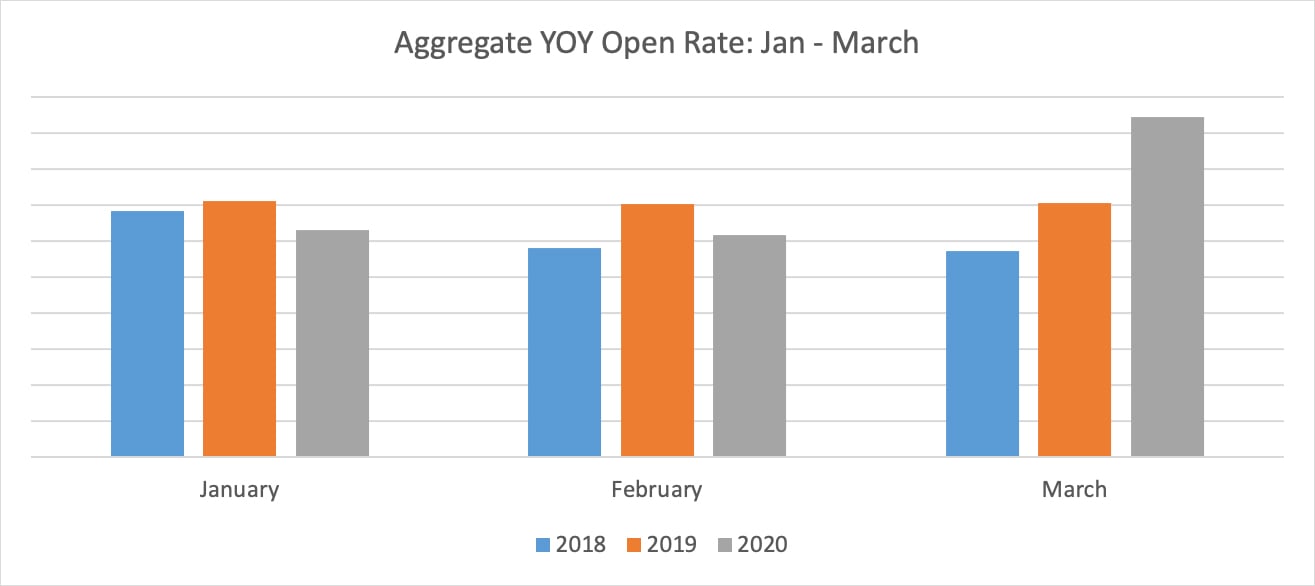
That’s right, we actually saw our highest open rates in March 2020 when compared to any other month in Q1 2018 – 2020! With many more people stuck at home, our emails are almost certainly hitting more eyeballs than they have in the past, causing this spike.
Your next question might be: “Ok, but were the open rates high just because people were opening to unsubscribe?” Well:
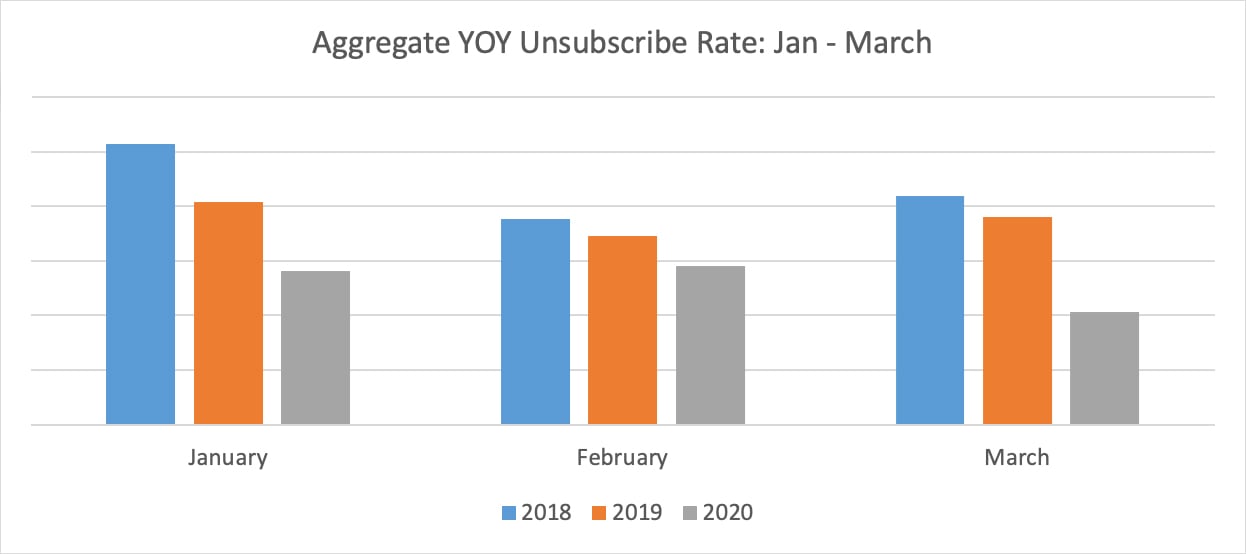
It appears the answer is “no.” We saw the lowest unsubscribe rate in March 2020 compared to any other month in Q1 2018 – 2020.
Email Fundraising Trends
“Ok, so email engagement appears to be strong during this period, but does this translate into effective fundraising?”
Again, so far, the answer overwhelmingly is “YES.” Most of our clients were already off to a strong start in 2020 and that didn’t slow down in March, even as the virus has spread. Below are the response rates to our messages with primary CTAs being donation-driven:
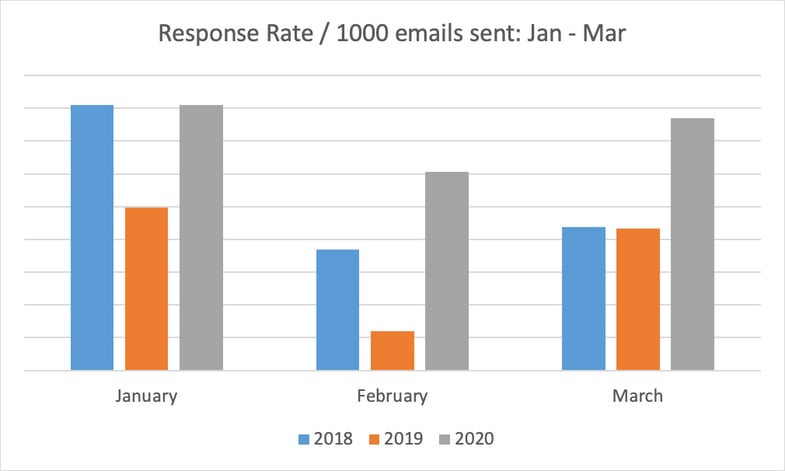
These trends are almost entirely consistent across our client base. The composition of the data is similar from a YOY standpoint and, most importantly, most don’t even have an obvious tie to directly fighting the impacts of coronavirus.
So what does all of this mean? Should I be sending email during the coronavirus pandemic?
The short answer is while it might be scary to execute campaigns during the pandemic, you can and probably should continue with your email efforts thoughtfully. That said, the most important ingredient to success is your approach.
For some, the connection from mission to coronavirus is obvious. If this is the case for your organization, we hope you have been saying this to your audience because your work is needed now more than ever.
If your nonprofit’s mission is not directly related to the relief effort, here are some of our recommendations on how to approach fundraising during this time:
Let your donors make their own decisions.
Remember, the human beings in your email file have already told you they care about your organization and mission, so don’t be afraid to communicate and ask for donations. Just because your organization isn’t doing work directly related to COVID-19 doesn't mean it hasn’t been affected by it.
If you thoughtfully craft an email (here’s one of our favorites) to your audience, don’t be surprised by how strong the results are.
You still have a story to tell, even if it’s not directly related to coronavirus.
We recently developed a strategy for one of our clients whose work doesn’t have a direct link to COVID-19, but they are still able to speak to how they are helping out in this crisis. Thus far, they have seen tremendous fundraising results YOY in email:
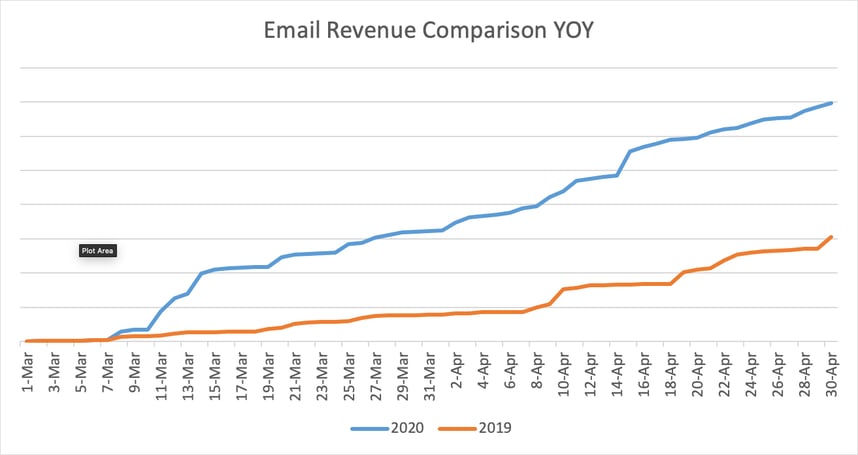
Similarly, we have a client whose mission is completely independent of COVID-19, but we’ve crafted a strategy to send cultivation-based emails to their audience with the goal of providing some relief during these dark times by making them smile. These emails actually generated the two highest open rates of any campaign they have sent in the past two years!
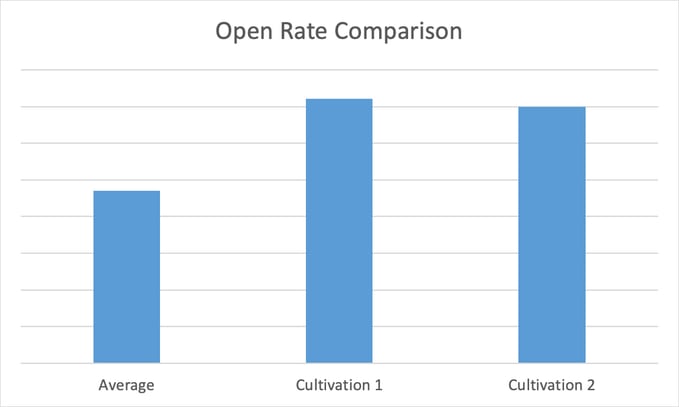
What did these two approaches have in common? They were attentive to the current climate, but they also weren’t afraid to communicate about the organization’s mission, even though they aren’t directly involved with fighting the pandemic.
Now more than ever, it is important to be human.
There isn’t a single person who knows how the next few months are going to unfold. However, you haven't given up on your mission and neither have your donors. Think of what you would tell a friend about your organization’s current situation and say that to your audience. And when you do, don’t be surprised when your audience responds as a friend would, too.





